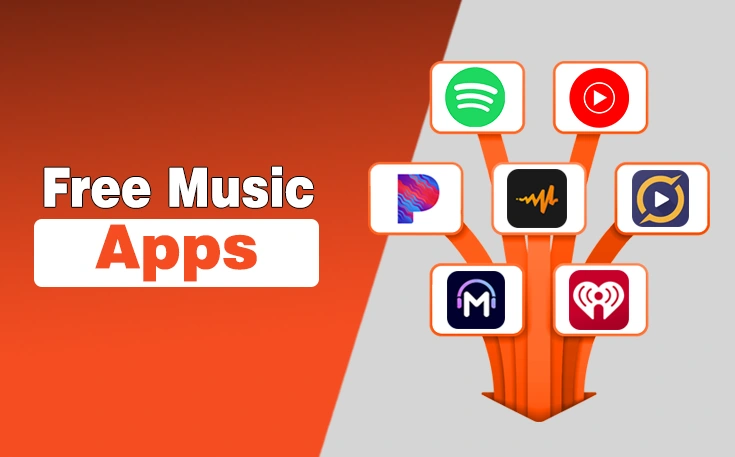Remote work has evolved from being a temporary emergency solution into a permanent way of life for many companies. The early days of remote work felt experimental. Teams scrambled to get tools in place, leaders worried about productivity, and security often took a back seat. But now, remote work is the new normal, and it brings with it a set of serious responsibilities.
When employees connect from homes, coffee shops, airports, or shared networks, the attack surface grows wider. Security gaps that may have been minor in an office environment become critical vulnerabilities in a remote one.
That is why the technology stack supporting remote teams has to be both flexible and secure. If chosen well, it reduces risks, keeps systems reliable, and makes collaboration seamless. If chosen poorly, it creates cracks that hackers are quick to exploit.
In this guide, I am going to take you through the tech stack that keeps a remote workforce safe and productive. Think of it as building multiple protective layers: if one fails, another is ready to catch the threat.
Key Technologies Which Make Remote Workforce Secure
In the under section, I have mentioned the key tech stack that is behind a secure remote workspace.
1. Core Infrastructure
The very foundation of a secure remote workforce lies in the infrastructure. This is where the protection of traffic, user verification, and trust policies begin.
Virtual Private Networks (VPNs)
Most organizations start with a VPN. It creates a secure tunnel for data and hides it from prying eyes. When employees connect to corporate systems from a public network, the VPN ensures traffic is encrypted and unreadable to outsiders. However, relying on VPNs alone is no longer enough. Hackers have developed ways to bypass them, and VPN fatigue is common among users.
Multi-Factor Authentication (MFA)
Passwords have always been the weakest link in security. People reuse them, write them down, or choose simple ones that are easy to guess. Multi-factor authentication adds a critical second barrier. Even if a password is stolen, without the second factor—whether it’s a code, biometric, or token—the attacker is locked out. Employees may groan about the extra step, but this minor inconvenience prevents major disasters.
Zero Trust Frameworks
A growing number of companies are adopting zero trust. The idea is simple: never assume trust just because a device or user is inside the system. Every request is verified, whether it comes from a laptop at home or a mobile phone in the office.
This approach slows down attackers who manage to get in. Instead of roaming freely, they hit barriers at every step. That delay buys defenders time to respond, which often makes the difference between a minor event and a major breach.

2. Incident Response System
Even the best defenses cannot stop every attack. Breaches slip through, systems fail, or human errors trigger problems. What matters then is how fast and effectively a company responds.
Crisis Management Platforms
Incident response platforms, and more specifically, crisis management platforms serve as the central command center during emergencies. They send alerts to the right people, guide teams through structured workflows, and eliminate confusion. Instead of chaotic back-and-forth emails, the response is coordinated and clear.
Integration with Other Tools
These systems often integrate with logs and monitoring tools. This means decision-makers get real-time data instead of wasting hours piecing together what happened. Once the incident is over, the platform stores lessons learned, which improves future planning and resilience.
Ease of Use During Stress
A major benefit of these systems is simplicity. Employees don’t need advanced training to follow guided steps. Clear prompts reduce mistakes, and panic is avoided. In practice, this calm and organized approach not only saves time but also builds trust among clients and employees alike.
3. Cloud Services
Remote work thrives on the cloud. File sharing, messaging, and project management have all moved to platforms like Google Workspace, Microsoft 365, and Trello. But every cloud tool is also a potential security risk.
Misconfigurations
One of the most common mistakes is overly broad permissions. Files end up being accessible to people who should not have them, or worse, left open to the public.
Safeguards
To counter this, companies implement role-based access, encryption both at rest and in transit, and detailed logging. Logs are vital because they reveal unusual behavior, such as unauthorized access or suspicious downloads.
Compliance Requirements
Industries such as healthcare, finance, and government face strict compliance rules. Cloud providers offer compliance features, but the responsibility doesn’t end there. Companies must run their own audits and train employees properly. A single careless action can undo even the most sophisticated security setup.
4. Endpoint Security
Every device connecting to the network is a potential doorway for attackers. With employees working from personal laptops or phones, this risk multiplies.
Endpoint Protection Platforms
These platforms scan devices for threats in real time, block malicious sites, and quarantine suspicious files. Automatic patching is especially critical because hackers often target outdated software. People may postpone updates, but forced patches close dangerous gaps.
Mobile Device Management (MDM)
MDM adds another layer of control. If a laptop is stolen or a phone is lost, IT teams can remotely lock or wipe the device. Access can also be revoked instantly. Employees may see this as intrusive, but given how blurred the lines are between personal and professional devices in remote work, it is a necessary safeguard.
5. Collaboration Tools
Collaboration is the backbone of distributed teams, but these tools can also be weak points.
Security in Communication Platforms
Chat apps like WhatsApp, video conferencing tools, and document-sharing platforms are frequent targets for hackers. Encryption ensures that conversations are private, while admin controls prevent outsiders from sneaking into meetings or workspaces.
Version Control
Another overlooked issue is conflicting edits and outdated files. Version control systems keep one single source of truth, reducing confusion and preventing leaks caused by multiple file copies floating around.
6. Identity and Access Management (IAM)
If the tech stack were a house, IAM would be the lock system that decides who enters which room.
Single Sign-On (SSO)
Remembering dozens of passwords is unrealistic. SSO allows employees to access all approved apps with one secure login. This reduces weak password habits and makes life easier for workers.
Least Privilege Principle
IAM also ensures employees only get the access they need for their role. Permissions are updated when roles change, and dormant accounts are shut down. Attackers love unused accounts, so eliminating them removes an easy entry point.
Privileged Accounts
High-level accounts like system admins are prime targets. These require special handling: credentials are rotated, sessions are monitored, and unusual activity is flagged. This prevents abuse from insiders and blocks outsiders who gain access.
7. Training and Awareness
Technology handles many risks, but people often reintroduce them. Phishing emails still trick employees, weak passwords still get used, and sensitive files still get mishandled.
Phishing Simulations
Running regular simulated phishing campaigns trains employees to spot red flags. Over time, they become more cautious about clicking suspicious links.
Short and Focused Sessions
Training works best when it is practical and digestible. Long lectures often fail because employees tune out. Short, scenario-based sessions leave a stronger impact and encourage better habits.
Culture Shift
The ultimate goal is a culture where awareness becomes natural. Workers start to double-check links, update passwords, and think twice before sharing data. It is a slow process, but one that makes the entire stack more resilient.
8. Monitoring and Analytics
Logs are everywhere: from login attempts to file transfers. But the sheer volume of data makes it impossible for humans to process alone.
Security Information and Event Management (SIEM)
SIEM tools analyze logs, highlight suspicious patterns, and trigger alerts. For example, if an employee logs in from two countries within the same hour, the system raises a flag. If someone tries to transfer large amounts of data at midnight, it gets noticed immediately.
Automated Response
Some platforms can even take automatic action—locking accounts or isolating devices—before human teams investigate. This combination of speed and human judgment strengthens defenses against advanced attacks.
Final Thoughts
Building a secure remote workforce requires more than just installing a VPN or adding antivirus software. It’s about weaving together multiple layers: core infrastructure, incident response, cloud safeguards, endpoint protection, collaboration security, IAM, training, and monitoring. Each layer covers the weaknesses of the others.
Mistakes will still happen, and attackers will always evolve. But with a strong, thoughtful tech stack, organizations can give their remote teams the confidence to work safely. Productivity stays high, communication stays clear, and even in moments of disruption, the business keeps moving forward.
Need custom app with amazing features?
Get a Quote




